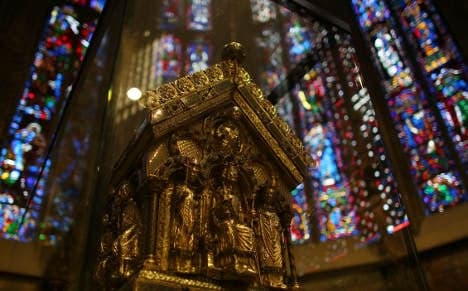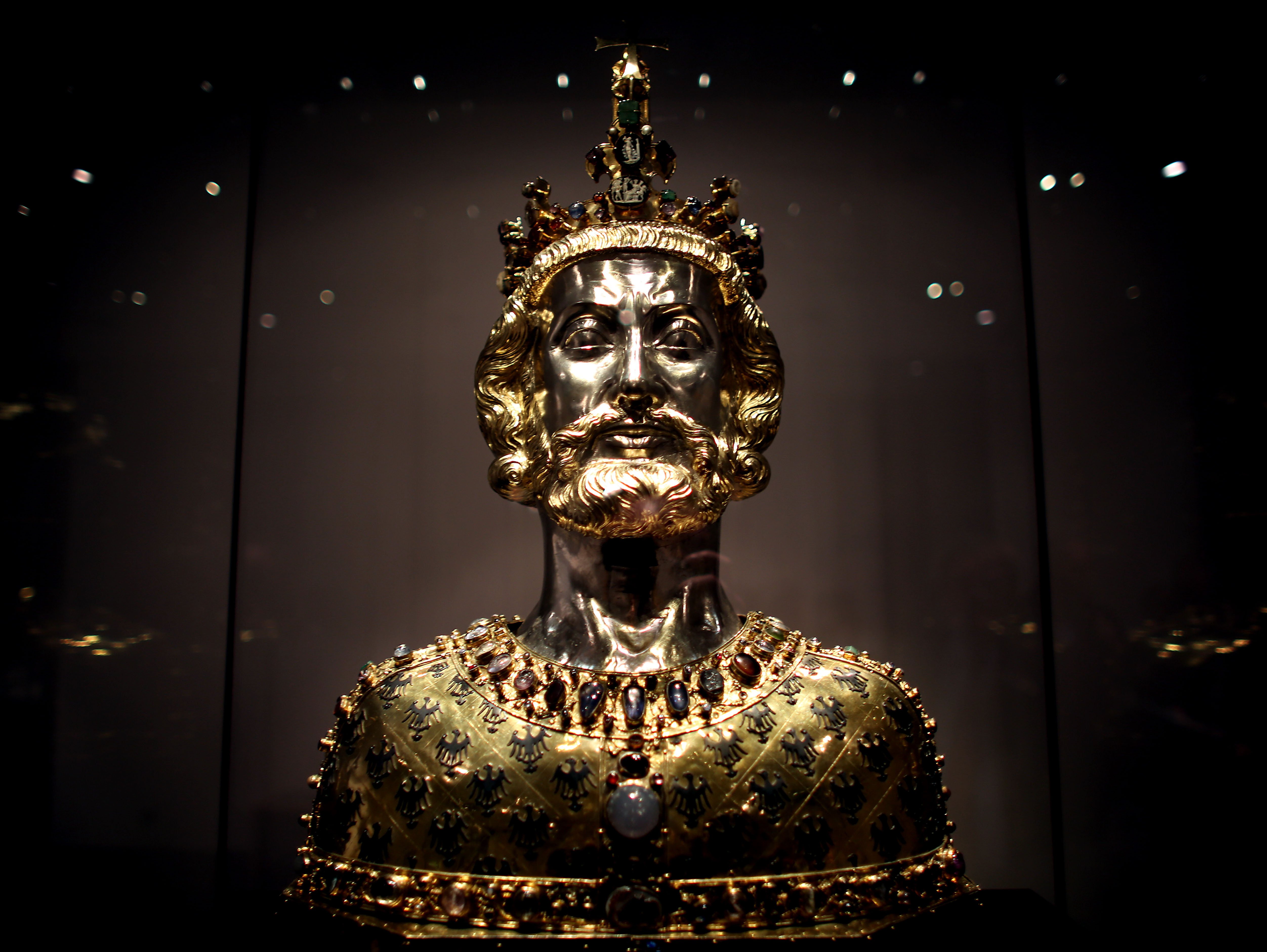Charlemagne's bones are (probably) real

German scientists have announced after almost 26 years of research that the bones interred for centuries at Aachen Cathedral are likely to be those of Charlemagne.
Researchers confirmed on Wednesday evening - 1,200 years to the day since Charlemagne died - that the 94 bones and bone fragments taken from the supposed resting place of the King of the Franks and founder of what was to become the Holy Roman Empire came from a tall, thin, older man.
The team first opened the sarcophagus of the first emperor in western Europe since the fall of the Roman Empire in secret in 1988 and presented their results for the first time on Wednesday.

One of the scientists studying the remains, Professor Frank Rühli, said: "Thanks to the results from 1988 up until today, we can say with great likelihood that we are dealing with the skeleton of Charlemagne."
From studying the dimensions of the upper arm, thigh and shin bones, scientists have built up a picture of the man behind the skeleton, and it matches descriptions of Charlemagne.
At 1.84 metres (six feet), he was unusually tall for his time. The team also estimated his weight at around 78 kilograms, giving him a slim body mass index of around 23.
Previous estimates had placed his height at between 1.79 metres and 1.92 metres.
And an account from medieval Frankish biographer Einhard the Frank claiming Charlemagne walked with a limp in old age could well be accurate, as both kneecap and heel bones had deposits consistent with an injury.
No new evidence was found to corroborate accounts that he died of pneumonia as researchers discovered no strong clues as to Charlemagne's health at the time of death.

The greater part of the skeleton was found in the king's elaborate tomb, while parts of the skull were found in a bust of the emperor. One of the shin bones was discovered in Charlemagne's reliquary - a ceremonial container for remains.
While most of the bones are accounted for, it is believed some of those missing were given away as relics at the time of the emperor's death.
READ MORE: Building beings of replica medieval town
Comments
See Also
Researchers confirmed on Wednesday evening - 1,200 years to the day since Charlemagne died - that the 94 bones and bone fragments taken from the supposed resting place of the King of the Franks and founder of what was to become the Holy Roman Empire came from a tall, thin, older man.
The team first opened the sarcophagus of the first emperor in western Europe since the fall of the Roman Empire in secret in 1988 and presented their results for the first time on Wednesday.

One of the scientists studying the remains, Professor Frank Rühli, said: "Thanks to the results from 1988 up until today, we can say with great likelihood that we are dealing with the skeleton of Charlemagne."
From studying the dimensions of the upper arm, thigh and shin bones, scientists have built up a picture of the man behind the skeleton, and it matches descriptions of Charlemagne.
At 1.84 metres (six feet), he was unusually tall for his time. The team also estimated his weight at around 78 kilograms, giving him a slim body mass index of around 23.
Previous estimates had placed his height at between 1.79 metres and 1.92 metres.
And an account from medieval Frankish biographer Einhard the Frank claiming Charlemagne walked with a limp in old age could well be accurate, as both kneecap and heel bones had deposits consistent with an injury.
No new evidence was found to corroborate accounts that he died of pneumonia as researchers discovered no strong clues as to Charlemagne's health at the time of death.

The greater part of the skeleton was found in the king's elaborate tomb, while parts of the skull were found in a bust of the emperor. One of the shin bones was discovered in Charlemagne's reliquary - a ceremonial container for remains.
While most of the bones are accounted for, it is believed some of those missing were given away as relics at the time of the emperor's death.
READ MORE: Building beings of replica medieval town
Join the conversation in our comments section below. Share your own views and experience and if you have a question or suggestion for our journalists then email us at [email protected].
Please keep comments civil, constructive and on topic – and make sure to read our terms of use before getting involved.
Please log in here to leave a comment.